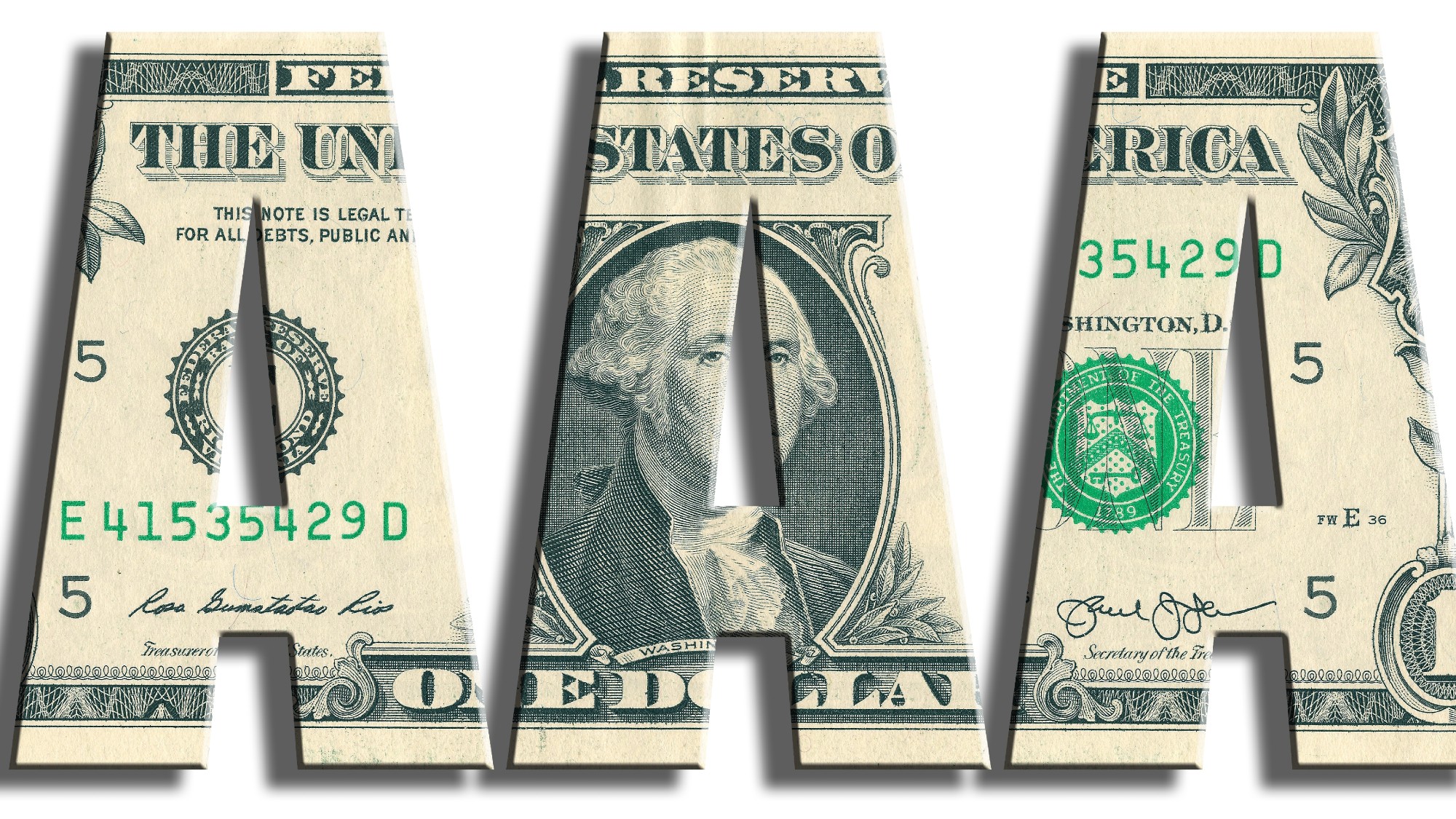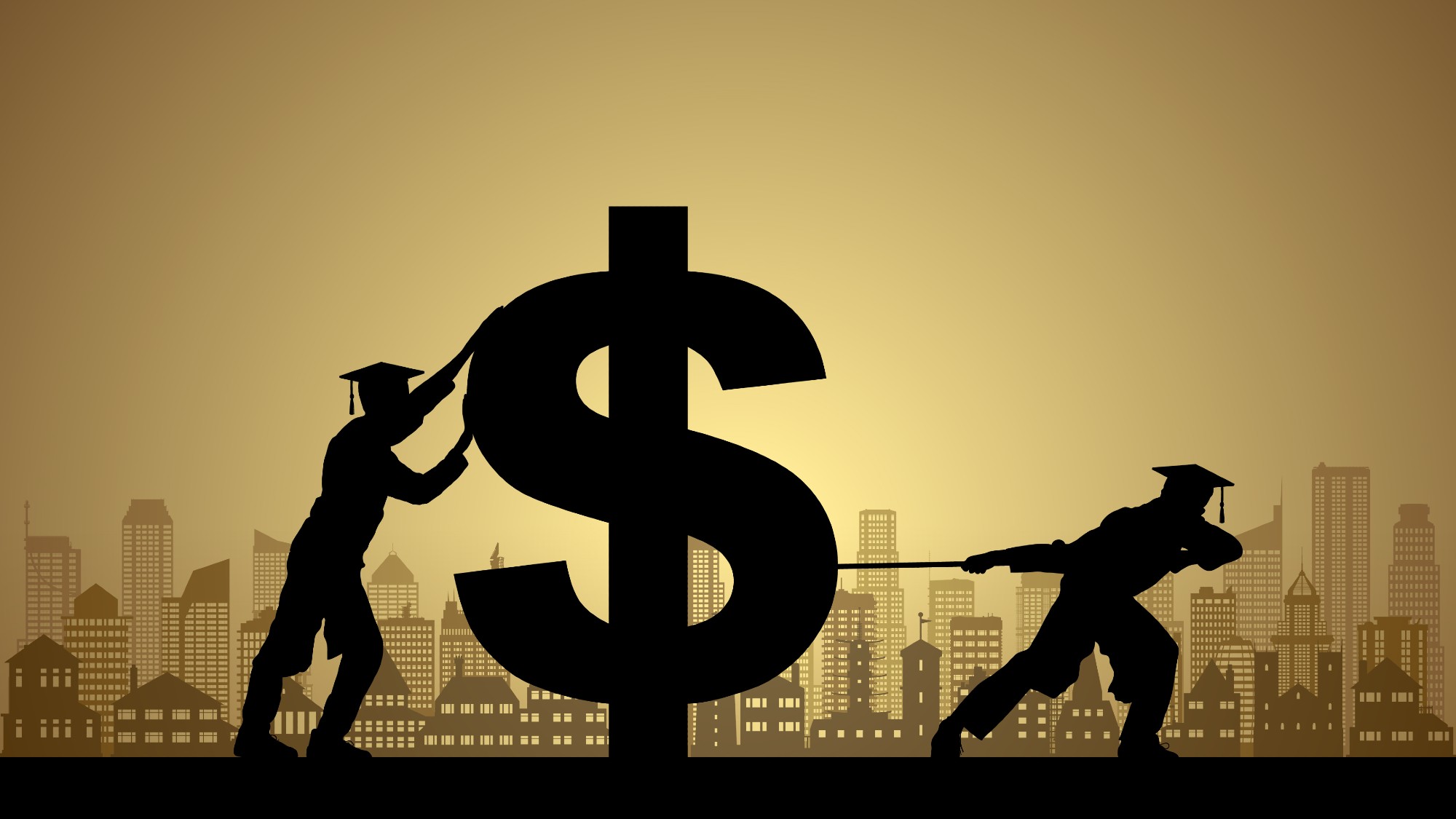US credit rating: what it is and why it matters
Credit rating agency Moody's downgraded the US last month


You hear a lot about the credit scores of individual consumers and how that affects their borrowing power. But what you might not realize is that governments have credit ratings, too.
Similar to those of individuals, government's credit ratings indicate how likely they are to default on their debt — and recently, the rating of the U.S. took a dip. In mid-May, the credit rating agency Moody's Ratings downgraded the U.S. credit rating by one notch, "from Aaa, the highest rating, to Aa1," said NerdWallet. It was not the first agency to do so, either. "The downgrade from Moody's means that each of the three major credit rating agencies no longer gives the United States its best rating," said The New York Times.
Here is a closer look at what that means — and why it matters.
The Week
Escape your echo chamber. Get the facts behind the news, plus analysis from multiple perspectives.

Sign up for The Week's Free Newsletters
From our morning news briefing to a weekly Good News Newsletter, get the best of The Week delivered directly to your inbox.
From our morning news briefing to a weekly Good News Newsletter, get the best of The Week delivered directly to your inbox.
What are credit ratings?
Just like consumer credit scores, the credit ratings of countries assess their general creditworthiness, or how likely they are to meet their debt obligations.
To make this determination, these ratings "measure the overall economic conditions of a country, including the volume of foreign, public and private investment, capital market transparency and foreign currency reserves," said Investopedia. Additionally, ratings "assess conditions such as overall political stability and the level of economic stability a country will maintain during a political transition."
There are a number of different credit rating agencies that assign credit ratings to countries, with the big three being Moody's, S&P Global and Fitch Ratings.
What causes credit rating downgrades?
A credit rating downgrade "means that government debt, including bonds and securities, is viewed as becoming riskier," said NerdWallet. There are a number of factors that can lead to that shift in perception.
A free daily email with the biggest news stories of the day – and the best features from TheWeek.com
The recent Moody's downgrade, for instance, was a reflection of "concerns about how the nation has managed its finances over the past decade and its expectation that government debt and interest rates will continue to grow," said NerdWallet. Another element, per Moody's, was "decades of gridlock and dysfunction in the nation's capital," said The New York Times.
Meanwhile, a prior rating downgrade in 2023 by Fitch was attributed to "expected fiscal deterioration over the next three years, a high and growing general government debt burden and the erosion of governance" in comparison to comparable nations, said Investopedia.
How do credit ratings affect consumers?
Shortly after Moody's downgrade, "investors sold off U.S. debt," in a "trend" that "threatens to drive up interest rates for everything from credit cards to mortgages, while pressing the brakes on economic growth," said ABC News. Alongside making borrowing more expensive, it is possible "businesses also face higher borrowing costs," which could affect hiring and other decisions.
Still, downgrades have historically "proved largely symbolic," said the Times. While the downgrade signals a slip, the "American government's debt remains the bedrock of the global financial system."
Becca Stanek has worked as an editor and writer in the personal finance space since 2017. She previously served as a deputy editor and later a managing editor overseeing investing and savings content at LendingTree and as an editor at the financial startup SmartAsset, where she focused on retirement- and financial-adviser-related content. Before that, Becca was a staff writer at The Week, primarily contributing to Speed Reads.
-
 4 tips to safeguard your accounts against data breaches
4 tips to safeguard your accounts against data breachesThe Explainer Even once you have been victimized, there are steps you can take to minimize the damage
-
 Received a windfall? Here is what to do next.
Received a windfall? Here is what to do next.The Explainer Avoid falling prey to ‘Sudden Wealth Syndrome’
-
 How to save more for retirement next year
How to save more for retirement next yearthe explainer Secure yourself a suitable nest egg
-
 Received a gift card this holiday season? Here’s how to maximize it.
Received a gift card this holiday season? Here’s how to maximize it.The Explainer Make the most of your present
-
 Who will the new limits on student loans affect?
Who will the new limits on student loans affect?The Explainer The Trump administration is imposing new limits for federal student loans starting on July 1, 2026
-
 3 ways to reduce the cost of owning a car
3 ways to reduce the cost of owning a carthe explainer Despite the rising expense of auto insurance premiums and repairs, there are ways to save
-
 How to shop smarter with a grocery budget
How to shop smarter with a grocery budgetThe Explainer No more pushing your cart down the aisles on autopilot
-
 What will next year’s housing market look like?
What will next year’s housing market look like?The Explainer Here is what to expect from mortgage rates and home prices in 2026


